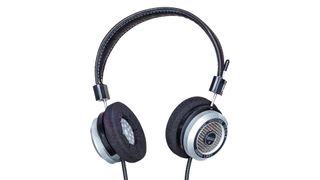
1. The quick list
2. Best overall
3. Best cheap wireless
4. Best cheap wired
5. Best premium wireless
6. Best build quality
7. How to choose
8. How we test
9. Recent updates
10. FAQ
11. Today's best deals
The best on-ear headphones are the perfect middle ground between in-ears and over-ears. They don't burrow in your ears like the former in a way that some people find too invasive, and they tend to be more portable (and less hot to wear) than the latter.
As the name suggests, these unburdensome designs perch on your ears rather than covering them completely, which is a look you might prefer or find more comfortable – especially if you want headphones rather than earbuds for exercise. But with their portable, lightweight designs, you could use them for pretty any activity, whether that's commuting, working, sleeping or dedicated home listening.
While every headphone manufacturer used to have a pair or two of on-ear headphones in its line-up, fewer offer them today, with the focus on the larger and more enveloping over-ear headphones designs. Thankfully, prominent headphone brands such as Sony, Grado and new-kid-on-the-block Austrian Audio are keeping on-ear headphones alive with a set or two in their arsenal.
Our expert in-house reviews team has tested countless pairs over the years and prides itself on its class-leading market knowledge, not to mention its unprecedented on-ear headphone testing process.
The quick list
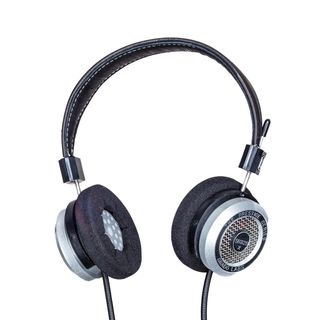
The best-value performers on this list; these wired, open-back on-ears are ideal for home listening.
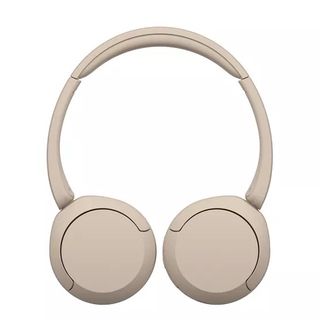
These Sonys nail the basics and are the best wireless on-ear headphones at the budget end of the market.
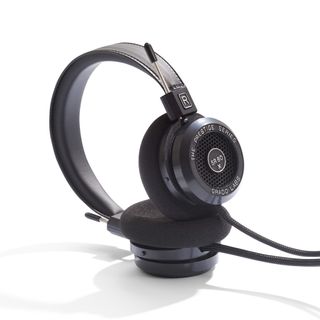
One of the most accessible pairs of wired on-ears we've tested, and they sound superb for the money.
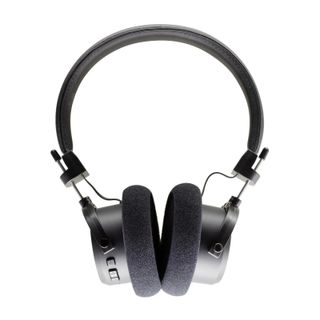
Quirky wireless on-ear headphones due to their open-back (i.e. leaky) design, but excellent sound quality and a 46-hour battery life make them ideal for home or garden use.
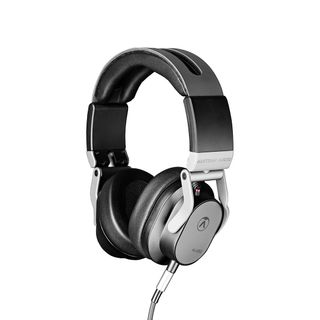
Austrian Audio might be relatively new to the on-ear headphones world, but you'd never guess it – the Hi-X50's build quality is second to none.
Recent updates
May 2024: No new entries this time, which isn't surprising due to the rarity of new on-ear releases nowadays, though we look forward to seeing how the all-new on-ear Beats Solo 4 fare.

Having been testing and writing about headphones for almost 11 years, I'm one of What Hi-Fi?'s go-to reviewers for testing them, whether they are wireless earbuds, over-ear headphones or indeed those 'in-between' on-ears. I've heard every on-ear pair on this page (and many more that haven't made the cut) and can confidently tell you they represent excellent value better than anything else on the market today. Whether you want a wired or wireless pair, or have a two-figure budget or three, there should be on-ear headphones here with your name on.
Best overall
If you're looking for a pair of on-ear headphones for private listening at home and can afford the Grado SR325x's outlay, look no further than these class-leading performers.
The Prestige range of headphones has been at the core of Grado’s output since it was introduced three decades ago. While the series has developed over the years, Grado has always done so in small evolutionary steps. The story remains the same for this new ‘x’ generation.
These wired headphones have always been detailed and articulate performers, and that hasn’t changed, but the ‘x’ generation sounds that bit more precise and insightful. They are the cleanest and clearest performers available at this price point, too.
These Grados once again prove that evolution is arguably a more reliable way of improving things than a headline-grabbing design revolution. You might not like their industrial-looking aesthetic, but we're confident you'll find favour with their highly entertaining sound. Just be aware that these are open-backs and therefore leak a fair bit of sound both in and out, hence their suitability for private home (over public street) use. And you'll get the most out of them pairing them with a DAC or decent audio source like a portable music player.
As our expert reviewers noted in our SR325x review, "these headphones will still sound acceptable with such sources [as phones and laptops], but we’d be looking at an outboard DAC of the quality of Chord’s Mojo for the laptop and phone, and at least Astell & Kern’s A&norma music player, if we want to hear the scale of the SR325x’s talents."
The best just got that bit better. Still What Hi-Fi? Award winners, then.
Read our full Grado SR325x review
Best cheap wireless
Sony's premium wireless headphones have dominated our What Hi-Fi? Awards in recent years, but the brand is increasingly targeting the budget end of the market – and with great results. As its WH-CH520 show, a low price doesn't have to mean scrimping on specs – these on-ears pack an incredible 50 hours of battery life, which is the best of all the wireless models in this list.
But there's a lot more to them than marathon battery life. Their build, while a little plasticky, is solid enough to endure, and they're very comfortable (though as with any headphones at this price, they do start to heat your ears after a while). They work with the standard Bluetooth codecs, and you can control them using Sony's superb app.
Sonically speaking, they're balanced, informative and enjoyable. True, they're not the most expressive at the low end, but, as we were pleased to report in our WH-CH520 review, "the bass is solid, deep and properly controlled at the leading edges, so the WH-CH520 express rhythms confidently".
Midrange lacks a little clarity, but for the price it's informative and actually rather eloquent. At the top of the frequency range, they balance brightness with substance well, so treble sounds have a little body to go along with their shine. There could be more detail, and dynamically they are a little inhibited, but given the price – and the battery life – we'll happily forgive them.
Have a slightly bigger budget and would benefit from noise cancellation technology? You should know that the over-ear siblings to these Sonys, the WH-CH720, are current What Hi-Fi? Award winners and add noise-cancelling to the mix for not much more money.
Read our full Sony WH-CH520 review
Best cheap wired
The SR80 have spawned many variants within the company’s Prestige Series in the three decades since launch, and the fact that they are still a part of the all-new Prestige X Series makes them the longest-running Grado model. The all-new SR80x succeeded the 2014-released, multi-What Hi-Fi? Award-winning SR80e from the previous Prestige E Series – and are former award winners themselves.
"Everything we like about their predecessors – their nimble-footedness, expressive, rolling dynamics, and insight across well-defined frequencies – has been inherited," we noted in our SR80x review. "And the punch and panache that have made the Prestige models such born entertainers are very much also part of the SR80x’s sonic signature." They aren't particularly warm or smooth in nature, though an extra dose of refinement this time around has made their forward, direct presentation all the more appealing.
Like the next-model-up SR325x (above), the SR80x are open-back designs and leak sound like a sieve, meaning people around you would hear your music while you would hear external sounds around you too. They're therefore more appropriate for use in private as opposed to, say, on a train or bus.
Grado hasn’t torn up its own rulebook and revolutionised its legendary headphones, because it hasn’t needed to. But the tweaks made to the SR80x have certainly added value in the right direction.
At this money, the SR80 model remains the finest budget on-ear headphones for home listening in the market.
Read our full Grado SR80x review
Best premium wireless
Like their predecessors (the GW100), the GW100x are something of a paradox and once again see Grado occupying a niche corner of the market.
They are a Bluetooth, battery-powered pair of supposedly portable on-ears that leak sound (because of their open-back design), don't fold away and don't have active noise cancellation, putting them in a strange, somewhat contradictory position compared with pretty much every other pair of wireless headphones.
Still, if you want a pair of wire-free headphones for use in a quiet place – perhaps while you're on a dog walk or pottering around at home or in the garden – the GW100x won't let you down. While most of the best wireless headphones have over-ear designs, the GW100x is the only on-ear model that delivers high-quality sound that is truly up there at their price. In line with Grado's signature sound, the GW100x are supremely clean and detailed, with a great sense of rhythmic drive and energy that make them wonderfully musical.
"It’s an even better story with wires attached," our in-house experts noted in our GW100x review. "Bluetooth performance is superb, but the GW100x feel like they hit another level of sharpness with the 3.5mm jack-equipped cable attached to the source device."
They complement those sonic skills with truly fantastic battery life (46 hours on half volume), aptX Adaptive Bluetooth support and a lightweight, on-ear build.
We’ve dubbed Grado the kings of open-back headphones in the past for their renowned efforts in the wired space, and with the excellent and hugely listenable GW100x, that crown remains firmly in place.
Read our full Grado GW100x review
Best build quality
If you want traditional wired on-ear headphones that don't leak sound like the recommended Grados above do, this (closed-back) Austrian Audio pair is your best bet.
Austrian Audio may not be the most interesting of names for a new hi-fi manufacturer, but the people behind it are ex-AKG employees and some of the most experienced in the industry. And that maturity shines through in the brand's Hi-X50 on-ear headphones.
They're beautifully built, with an extensive use of metal in the headphone band. Add to that the folding hinges and mounting brackets, and you got a pair of cans that feel much sturdier and well-built than their more plasticky rivals. "Headphone comfort is good once the initially high-clamping pressure eases off with use," notes our expert reviewers in our Hi-X50 review. "We find our ears heating up over extended listening, but that’s the nature of this type of closed design. Beyond that, these Austrian Audios are light and easy to ignore, and that’s a good thing."
A bonus: you can replace certain components too (like the headband cushioning and memory foam earpads) if they wear out due to wear and tear, which is not only great for the user as it'll save them a fortune on buying new headphones if something does wear out, but it's also better for the environment.
On the performance side, they tend to favour analysis over-enthusiasm, but it never tips over into unemotional or clinical territory. If you want to hear deep into the recording and track subtle instrumental strands, the Hi-X50 do it better than almost anything else we’ve heard at this level (certainly if we stick to closed-back rivals).
If you’re looking for well-designed wired on-ear headphones for portable or domestic use, these Austrian Audios should be right at the top of your shortlist.
Read our full Austrian Audio Hi-X50 review
How to choose the best on-ear headphones for you
When choosing which of the best on-ear headphones is right for you, you'll want to ask yourself what your priorities are. Are Bluetooth wireless headphones a must so that you can be untethered to your phone (or other source)? Or are you after a pair of wired headphones that will deliver the absolute best performance possible for your budget?
If it's the former, you should check you're happy with quoted battery lives as well as Bluetooth codec support. If your phone or other music source is compatible with a higher-quality codec such as LDAC or a flavour of aptX, you can benefit from that by acquiring headphones that also support it. While active noise cancellation (ANC) is increasingly found in wireless over-ear designs, it isn't all that common in on-ear models due to the nature of how their design sits on your ear rather than enclose it. Indeed, neither the wireless Grados nor Sonys we recommend above have ANC.
Then there's the question of what style you are after – open vs closed-back. In the case of wired headphones (and the wireless Grados in this list), open-backed pairs deliver wonderfully open sound quality – but they leak the music like nobody's business and are therefore often limited to at-home use only. Closed-backed pairs, however, are more common for on-ear headphones and don't leak sound, making them more travel-friendly.
You should also consider how portable you need a pair to be. Most (but not all) pairs can physically fold up to fit in a pocket or small bag, and some are so light you could forget you have them on you. We'd always suggest checking out the fit in a shop if you can – not least if you're looking for on-ear headphones to workout in – or at least checking the weight specification.
And if you're looking for a wired pair to use mostly at home, note how long the supplied cable(s) are and the cost of any additional ones you might need.
How we test on-ear headphones
We have state-of-the-art testing facilities in London and Reading, where our team of experienced, in-house reviewers test the majority of hi-fi, audio and AV kit that pass through our door.
Of course, testing on-ear headphones doesn't often require such facilities. What is important in our headphones reviewing process is that each pair is a) used as they are intended, out and about or at home depending on their style and type, and b) compared to the best in its price and style class – whether that's one standout pair or a few we favour the highest among the 100+ pairs we listen to each year for reviews and What Hi-Fi? Awards judging.
As What Hi-Fi? is all about comparative testing, we keep class-leading products in our stockrooms so we can always compare new products to ones we know and love, allowing us to gauge how good a pair is in the context of the wider market.
We are always impartial and make sure we hear every product at its very best, so we'll try plenty of different types of music and give them plenty of listening time (and time to run in), while the wired headphones that might warrant being used with a DAC are tested with a suitable one.
While sound quality is the number one factor in shaping our overall verdicts, it isn't the sole consideration. Several members of the reviews team will wear each pair to ensure they fit well across different head shapes and are comfortable for longer listens. Build and design portability are also scrutinised while we live with them during our reviewing process, and we check to see if wireless models' claimed battery lives are accurate in real-world use. If an on-ear pair has active noise cancellation, we'll ensure part of our testing involves using them in different environments, too.
You can read more about how we test and review products at What Hi-Fi? here.
Recent updates
- March 2024: Added the Grado GW100x as a premium wireless on-ear option for its excellent sound quality and equally excellent battery life.
- January 2024: Added an FAQ section (below) to help inform readers in their buying decision.
- November 2023: Labelled the Grado SR325x (our best overall pick) as a What Hi-Fi? Award winner following its successive win.
- October 2023: Added the Sony CH-520N as our cheap wireless on-ear recommendation after it came away with a glowing five-star review.
FAQ
What's the difference between on-ear and over-ear headphones?
They often look similar, but over-ear headphones cover the whole ear, with the earpads resting on your head, whereas on-ear headphones' earpads are smaller and sit against the ear. On-ears are therefore physically less burdensome, though they don't tend to envelop you in sound as much as over-ears do.
You can read our on-ear vs over-ear headphones guide for the pros and cons of each.
What is better, in-ear or on-ear headphones?
It depends on your preference and where you'll be wearing them. With their small size, in-ears are great for commuting, but some people find them too intrusive. On-ears are arguably better for home listening, especially if they are open-backed and hence leak sound.
Are over-ear or on-ear headphones better for noise cancelling?
Typically, over-ear headphones are better for noise cancelling. Because they cover the whole ear, they already have a passive 'noise isolating' effect – i.e. they block the wearer off from the outside world. Therefore any active noise cancellation will seem much more effective because outside sounds have already been made to sound less loud.
Because of this difference in fit, active noise cancellation is a rare feature in on-ear designs.
Useful links
Why you can trust What Hi-Fi?
- Our pick of the best wireless headphones you can buy
- Prefer over-ears? Here are the best over-ear headphones on the market
- And the best in-ear headphones for those after earbuds
- Not sure? Check out our advice on how to choose the right pair of headphones